Making Traps with Paracord
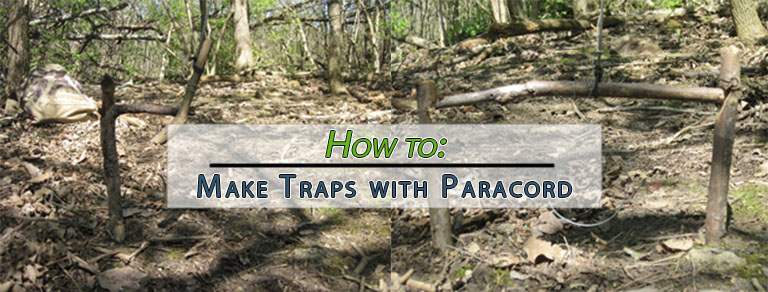
Paracordism 101 – Part 5
By Blake Alma
www.blakealma.com
We have already constructed my two favorite traps with paracord, yet there are so many other traps that are made with paracord. Paracord is such a great material to make traps with. It is a flexible, strong, and stretchable making it great for traps. Paracord can be used as the triggering mechanism in many traps. It can also be used to make the snare.
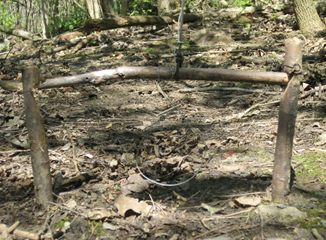
The Pencil Snare is a snare that triggers once the animal enters the snare’s noose. The snare is attached to a stick called the pencil. The pencil stick is set in place by two sticks. The sticks have two carved grooves to keep the pencil in place. A flexible sapling has paracord tied onto it so it pulls force on the pencil.The snare triggers by an animal pushing the pencil out of place causing it to fly up in the air. This trap is recommended for squirrels, rabbits, and small opossums.
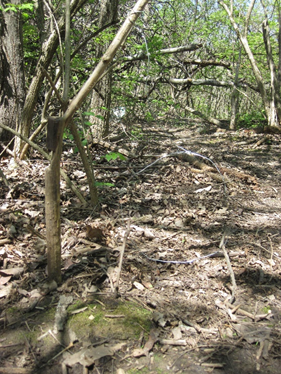
The Trigger Snare is also a snare that triggers when the animal enters the snare’s noose. This snare is like the pencil snare, but is used to trap larger animals. This trap is constructed from two sticks, some paracord, and snare wire. One stick is anchored into the ground while the other stick latches onto the anchored stick to keep the trap in place. The paracord is attached to a flexible sapling. The noose is connected to the latching stick. When the animal walks through the snare, the latching stick comes out of the groove in the anchored stick. It then releases the trigger, and it traps the animal. This trap is ideal for trapping opossums, groundhogs, raccoons, and foxes.

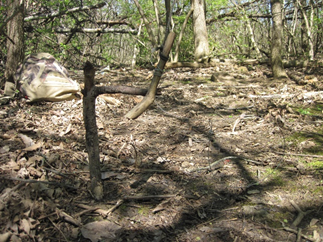
The Spring Snare is nearly the same trap as the trigger snare. The only difference is that the sticks already can naturally attach onto one another. Cutting a groove into the stick is unnecessary. It is construct from an “L” stick, a latching stick, paracord, and some snare wire. The animal walks through the snare’s noose and pushes the sticks off each other, releasing the “spring” and trapping the animal.
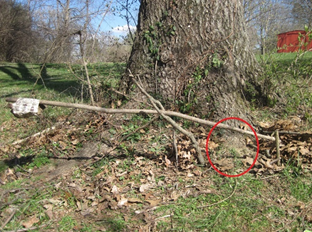
The Lift Pole Snare is a snare that triggers when the animal enters the snare’s noose. The pole gets lifted into the air once triggered, trapping the animal. This snare is constructed from an “Y” stick, an “L” stick, a long sturdy stick, a rock, some paracord, and the snare wire. The snare is circled red in the image. This snare is ideal for trapping chipmunks, squirrels, and birds.
Now, where to put your snare?
By a Hole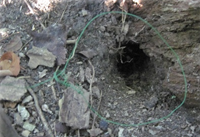
Searching for hole outside can sometimes be hard or easy. You might have seen a chipmunk come out of nowhere. Well, it came out of a hole not from nowhere, Duh! That might be a good spot for a snare. Also, Rabbits have holes. So, putting your snare in front of the hole is ideal, for when it come out it smells the bait. Look in the woods, your yard, or at a park for these holes.
Animal Dung
Some might find this gross, some might have the art
of the outdoorsman by their side so they are not grossed out. DO NOT WORRY,
YOU DON'T HAFTA TOUCH IT! Fear not. When you
find scat, it might mean an animal travels though that area. Henceforth, it
might be a good spot to set your snare.
Footprints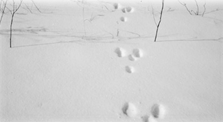
Now, we all have seen footprints in the snow
before, but do you know what kind of animal it is? Setting a snare where the
footprints are might lead to a food source, which will make you success rate
much higher. Searching on the internet different animal footprint will be
helpful!
Acorns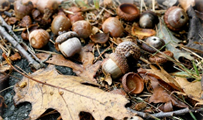
Look for white and red oak trees. They most likely
have acorns, meaning squirrels and chipmunks will feast on them. It might also be
a good place to set your snare.
Trampled Grass
You might see grass in a park or in your yard all trampled (bent over) down. It is like that because something travels over it often. It is called a game trail or path. If it is not very wide of a path, squirrels, chipmunks, or rabbits most likely travel that way, making it a great place to set a snare.
I hope this article will show you how paracord is great survival tool for trapping.
- Blake Alma
